The Most Popular Types of Peaches for Eating and Baking
Updated: Apr. 29, 2022
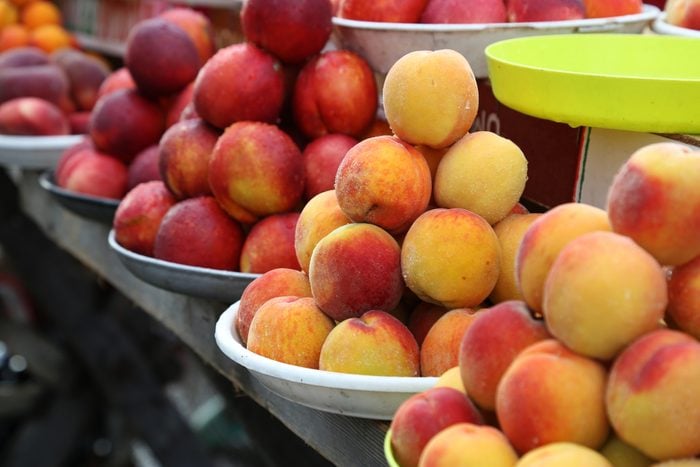
Your recipe calls for peaches, but does it matter what kind of peach you use? Not all types of peaches are interchangeable, so find the right fruit before you start baking.
Most bakers know there are types of apples and pears, and it’s no secret that there are several kinds of stone fruit. It’s less common knowledge that peaches (a type of stone fruit) come in different colors, shapes and sizes. Each variety can be used for making any number of healthy peach recipes, but some are better suited for eating raw while others should be cooked.
How will you know which peach to choose? Read on to find out!
What Are Peaches?
Peaches are a fruit in the Prunus genus (also known as stone fruit) along with cherries, apricots and plums. Peach trees are deciduous and originated in Asia, but today they’re grown throughout the United States. Georgia is famous for its peaches, but these trees can be grown in most of the country—anywhere among USDA zones 4 to 9.
Peach trees tend to flower in the spring and produce fruit between May and late September. Heirloom varieties have a very short growing season and are typically only available in July and August.
The 3 Classifications of Peaches
Peaches come in different shapes and colors, but there are three common classifications of peaches: clingstone, freestone and semi-freestone.
Clingstone
Clingstone peaches, as the name indicates, contain flesh that clings to the stone (more commonly known as the pit). They’re characterized by soft flesh and sweet, lightly acidic flavor, and they’re some of the juiciest peaches you’ll find.
Freestone
With freestone peaches, the pit falls out freely as flesh easily separates from the pit. These peaches are generally larger and firmer than clingstone, and their flavor varies based on the varietal.
Semi-Freestone
Semi-freestone peaches are a hybrid of the two. When unripe, the flesh clings to the pit, but it loosens and becomes easier to remove as the peach ripens. They tend to be extremely sweet and juicy.
Most of the peaches you’ll find at the grocery store today are freestone or semi-freestone. That’s good news for you because freestone peaches are much easier to prep! Clingstone peaches are generally used for processing and canning, although heirloom varieties can be found at your local farmers market.
Different Types of Peaches
Some peaches are better suited for baking while others are perfect for fresh savory peach recipes. But, when it comes down to it, the best peach is always the one that’s freshest. To select a ripe peach, pick it up and take a deep whiff. The one that smells the most fragrant is the one to buy!
If you do end up with underripe stone fruit, store them in a closed paper bag on the kitchen counter. Once they’re ripe, you can extend the shelf life by storing them in the crisper drawer in the refrigerator for a few days. That said, a ripe peach is best eaten within a day or two of purchasing, so plan to enjoy them at their peak!
Psst: Do you know this trick for peeling peaches?
Yellow
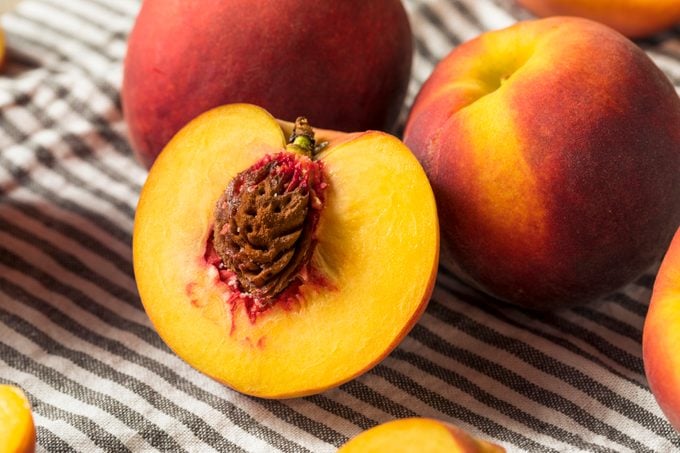
The most common peach at the grocery store is a fuzzy, heart-shaped peach with yellow flesh and a deep red center around the pit. (Don’t worry if there’s some white stuff around the pit; it’s called callus tissue, and it’s safe to eat.) Yellow peaches are bright and acidic, with firm flesh and a characteristically tangy flavor. As they ripen, yellow peaches become juicier, sweeter and less acidic, and the color darkens to a deeper yellow. Yellow peaches are perfect for canning, as they hold their texture well when heated.
White
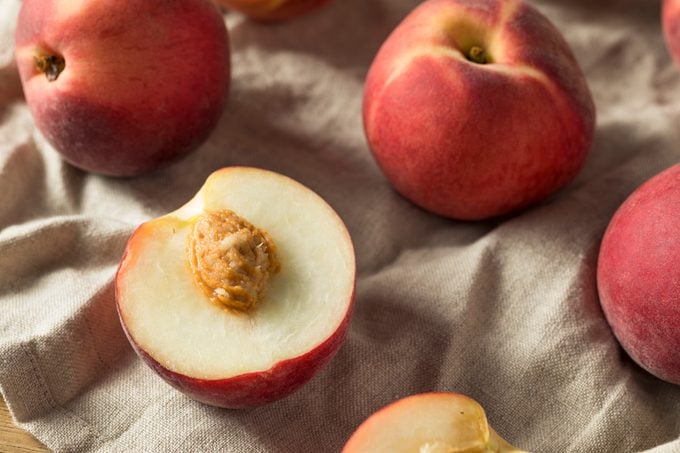
White peaches aren’t exactly white; they have a blushy pink exterior and a pale yellow interior. Unlike yellow peaches, the color of a white peach doesn’t change as it ripens. White peaches are sweeter, juicier and less acidic than yellow peaches. That means they don’t hold up as well when they’re baked, so we like to stick to fresh peach recipes that feature raw white peaches.
Donut
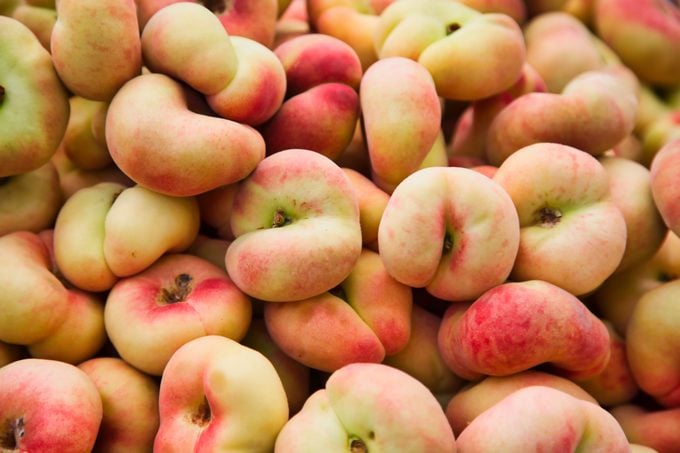
Donut peaches are an heirloom variety of clingstone peach, so you’re more likely to find them at the farmers market than at the grocery store. They’re wide and flat, resembling a small doughnut. They’re exceptionally sweet and low in acid, and our favorite way to enjoy them is as a snack out of hand. They have a very short growing season, so look for them between July and August.
Babcock
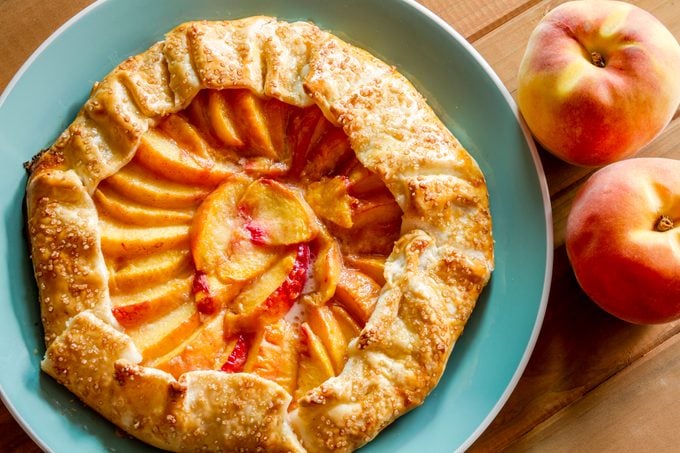
If you can find Babcock peaches, they’re perfect for peach desserts. That’s because these semi-freestone peaches aren’t as sweet as other types of peaches, featuring a noticeable tart flavor. You’ll want to make sure to add enough sugar to your recipe to balance them out, though, but that sweet-and-tangy flavor will surprise your guests as no other peaches can!
Snow
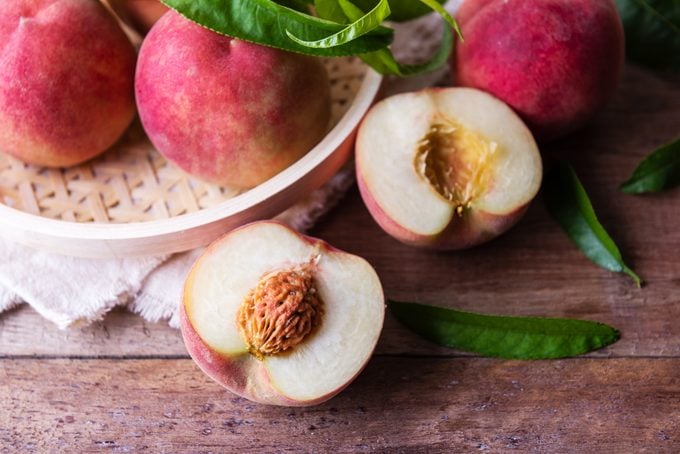
The snow peach, also known as tropic snow peach, has a bit of a trick name. It’s not grown in areas with snow, but rather it’s ideal for low-chill areas like Florida. They ripen earlier than most peaches (in mid-May) and produce medium-sized, white-fleshed fruits that are similar in flavor to donut peaches (sweet and low-acid). These peaches are perfect for early-season salads and desserts.
Belle of Georgia
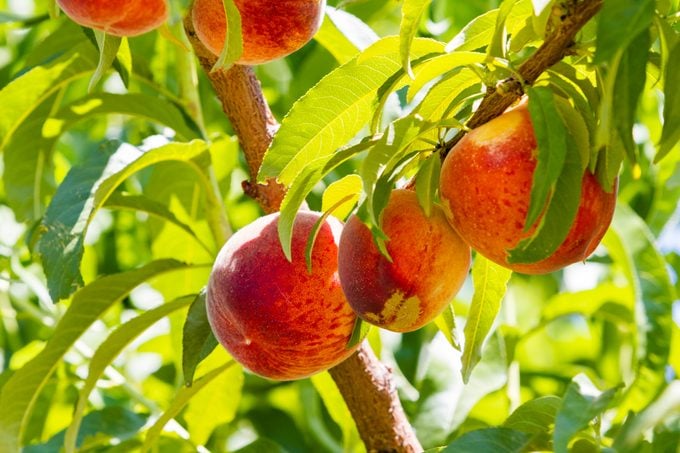
Living in the Southeast has its benefits, and one of those is access to the Belle of Georgia. These large, white-fleshed peaches are exceptionally juicy. The flesh is firm, making them a perfect option for baking or canning. They’re usually only available in late August, so snatch them up while you can!
Nectarines
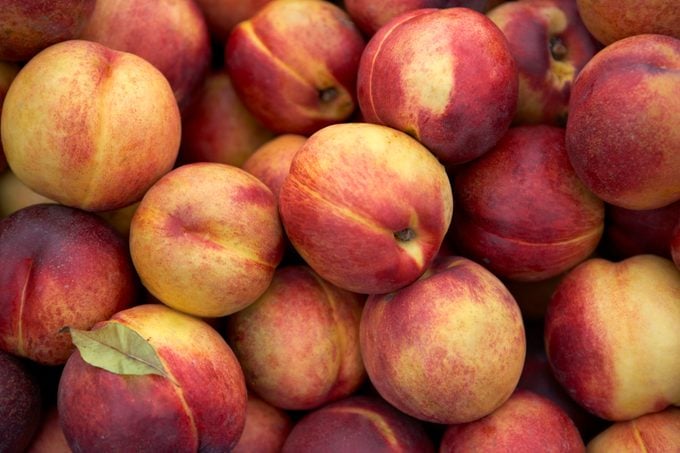
A nectarine looks a lot like a peach and tastes a lot like one, too. That’s because nectarines are actually a type of peach. They share a yellow peach’s firm texture and yellow flesh, but they have a darker color and boast smooth skin instead of a fuzzy exterior. Nectarines are sweeter than peaches, and they have a bold aromatic character. Their firmness makes nectarines perfect for grilled appetizers, salads or desserts.
